How to Build a Lead Generation Funnel that Multiplies Conversion

Your business has been thriving ever since you offered a very lucrative deal. You’re getting more leads than ever, and your sales team is excited about the potential growth.
However, soon, the excitement turns to frustration. Leads are getting lost in the shuffle, follow-ups aren’t as consistent, and potential customers are slipping away.
Your team is overwhelmed, struggling to manage the influx, and the conversions you expected just aren’t happening. The once-promising start has now turned threatening for your growth and reputation.
Unfortunately, this is a reality for many businesses that can’t move customers through the lead generation funnel in a structured manner. Without a clear plan to guide leads through the funnel, you risk losing valuable opportunities.
This blog post will walk you through how to avoid this crisis by understanding the lead generation funnel, implementing effective tactics, and avoiding common mistakes, so you can turn your leads into loyal customers.
Understanding how the lead generation funnel works
The lead generation funnel is a key concept in marketing. It helps businesses visualize the journey potential customers make from discovering their brands to becoming loyal clients. Understanding how this funnel works can significantly improve how you attract, nurture, and convert leads.
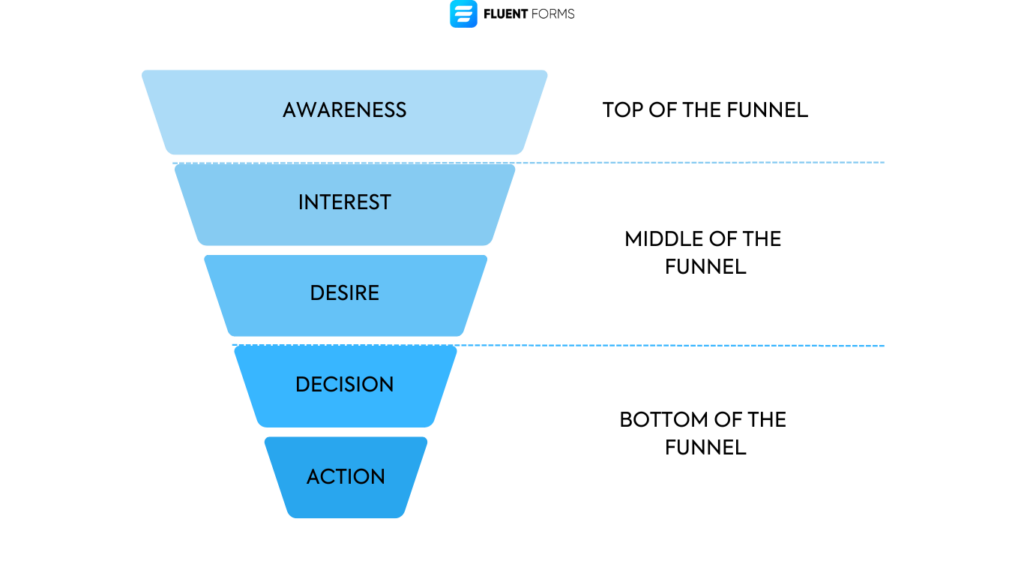
Let’s break down the funnel into its main stages and how each contributes to your overall sales strategy.
1. Top of the funnel (Awareness)
At the top of the funnel, your goal is to attract as many potential leads as possible. This stage is all about building awareness and capturing the interest of people who are yet to learn they need your product or service.
At this stage, you create content like blog posts, social media updates, and videos to educate and attract your audience. Moreover, you optimize your posts and pages for search engine and paid advertising to increase your visibility and drive traffic to your website.
The more value you provide at this stage, the more likely people are to engage with your brand and move further down the funnel.
2. Middle of the funnel (Consideration)
Once leads are aware of your brand, they move to the middle of the funnel. At this stage, they start considering whether your product or service can solve their problems. This is where you begin to nurture these leads by offering more detailed information that addresses their specific needs and pain points.
Here, you engage with leads through email marketing, webinars, and personalized content that helps them see how your product can benefit them. As leads interact with your content, you score them based on their actions to determine how interested and likely they are to buy from you.
It’s crucial to build trust and demonstrate your expertise at this stage. Providing case studies, whitepapers, and product demos can be very effective.
3. Bottom of the funnel (Decision)
The bottom of the funnel is where leads are ready to make a decision. They’ve done their research by this point and are now considering whether to choose your product or service over others. Your job is to make the decision-making process as easy and delightful as possible.
This is where your sales team steps in to answer any final questions, offer tailored solutions, and close the deal. Sometimes, a well-timed discount or a free trial can tip the scales in your favor.
Ensuring a smooth and supportive experience at this stage can make all the difference. Follow-ups and personalized offers can help convert leads into customers.
Understanding how the lead generation funnel works allows you to guide potential customers through each stage effectively, increasing the chances of converting them into loyal clients. Each part of the funnel requires a different approach. However, when executed well, it can lead to sustained growth and success for your business.
Different stages of a lead generation funnel: tactics & metrics
Understanding the different stages of the lead generation funnel is key to optimizing your marketing efforts. Each stage requires specific tactics and has its own set of metrics to track efficiency.
By aligning your strategies with the funnel’s stages, you can more effectively nurture leads and convert them into customers. Let’s dive into the tactics and metrics that apply to each stage.
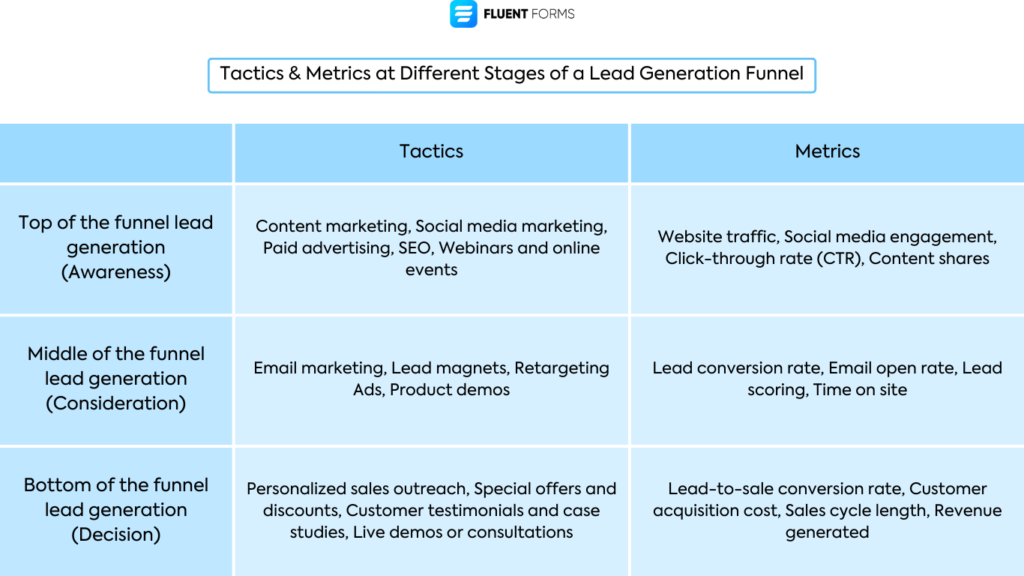
Top of the funnel lead generation tactics
The top of the funnel (TOFU) is all about awareness. Your goal at this stage is to attract as many potential leads as possible and get them interested in your brand. The tactics of this stage include the following –
Content marketing: Create blog posts, infographics, and videos that address common problems or questions in your industry.
Social media marketing: Use platforms like Facebook, LinkedIn, and Instagram to share valuable content and engage with your audience.
Paid advertising: Run PPC campaigns on Google Ads or social media to drive traffic to your website or landing pages.
Search engine optimization (SEO): Optimize your website and content for search engines to increase organic traffic.
Webinars and online events: Host webinars or live Q&A sessions to provide in-depth knowledge and attract a broader audience.
Top of the funnel lead generation metrics
At this stage, you’re primarily tracking the reach and engagement of your efforts to understand how well you’re attracting potential leads.
Website traffic: The number of visitors to your website, which indicates how many people are discovering your brand.
Social media engagement: Likes, shares, comments, and follows that show how well your content resonates with your audience.
Click-through rate (CTR): The percentage of people who click on your ads or links, reflecting the effectiveness of your calls to action.
Content shares: Your reach is amplified when others share your content. It also allows you to attract more leads.
Middle of the funnel lead generation tactics
In the middle of the funnel (MOFU), leads are considering their options. Your focus here is on nurturing these leads by providing more in-depth information and building trust.
Email marketing: Send personalized emails that provide valuable content, product updates, or special offers.
Lead magnets: Offer resources like eBooks, whitepapers, or case studies in exchange for contact information.
Retargeting Ads: Use retargeting campaigns to remind visitors who didn’t convert on their first visit to return and take action.
Product demos: Provide hands-on demonstrations or free trials that allow leads to experience your product or service.
Middle of the funnel lead generation metrics
MOFU metrics focus on engagement and how well you’re nurturing leads toward making a decision.
Lead conversion rate: The percentage of website visitors who become leads by signing up for a newsletter, downloading a resource, or requesting more information.
Email open rate: The percentage of recipients who open your emails, which indicates the effectiveness of your subject lines and the relevance of your content.
Lead scoring: A numerical value assigned to leads based on their interactions with your content, helping you prioritize follow-up efforts.
Time on site: The amount of time leads spend on your site, which can indicate their level of interest and engagement.
Bottom of the funnel lead generation tactics
The bottom of the funnel (BOFU) is where leads are ready to make a purchase decision. Your goal is to close the deal by addressing any final concerns and offering compelling reasons so they choose your product or service.
Personalized sales outreach: Directly engage leads with personalized messages or calls to address their specific needs and answer any questions.
Special offers and discounts: Provide limited-time discounts or special packages to encourage immediate action.
Customer testimonials and case studies: Showcase success stories from satisfied customers to build trust and credibility.
Live demos or consultations: Offer one-on-one sessions where potential customers can see your product in action or discuss their unique requirements with your sales team.
Bottom of the funnel lead generation metrics
BOFU metrics are all about conversion and understanding how well you’re turning leads into paying customers.
Lead-to-sale conversion rate: The percentage of leads who make a purchase, indicating the effectiveness of your closing strategies.
Customer acquisition cost (CAC): The total cost of acquiring a new customer, including marketing and sales expenses.
Sales cycle length: Sales cycle length is the average time it takes to convert a lead into a customer. It helps you assess the efficiency of your sales process.
Revenue generated: The total revenue the converted leads bring in reflects the success of your entire lead generation funnel.
By aligning your tactics and metrics with each stage of the lead generation funnel, you can optimize your efforts, better understand your audience’s journey, and ultimately increase your conversion rates.
This structured approach not only helps in tracking performance but also in making data-driven decisions that ensure growth.
5 mistakes to avoid while moving your leads through the funnel
Moving leads through the funnel requires a strategic and thoughtful approach. However, there are common pitfalls that can hinder your progress and ultimately cost you conversions. Here are five mistakes to avoid, along with insights on how to sidestep them.
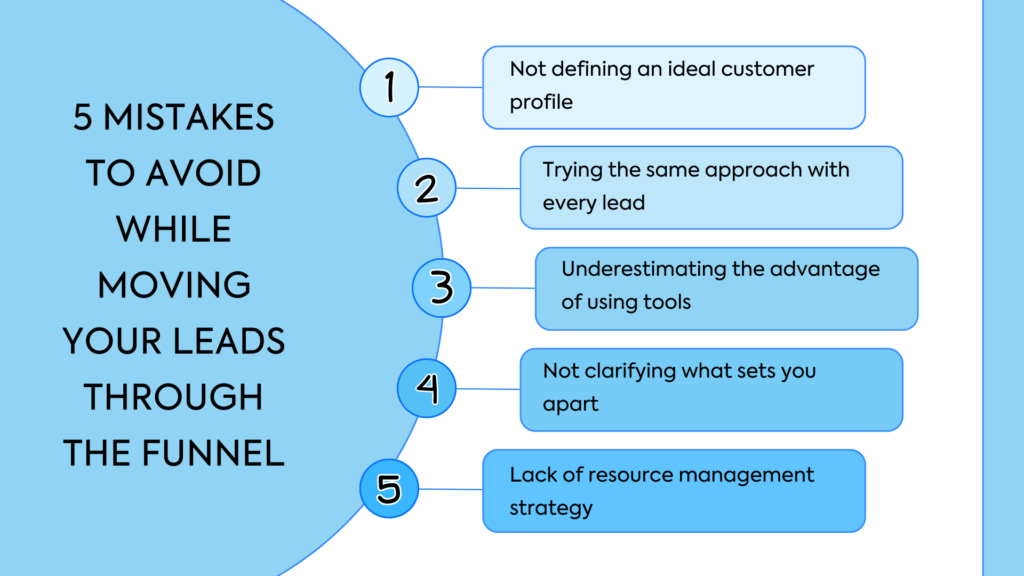
1. Not defining an ideal customer profile
Your lead-generation efforts can become unfocused without a clear understanding of your ideal customer. Trying to appeal to everyone often attracts leads that are unlikely to convert.
Besides, when you lack a targeted and well-defined customer profile, it causes you to waste resources on the wrong people and eventually lowers conversion rates.
Develop a detailed ideal customer profile (ICP) that outlines the key characteristics of your best potential customers, including demographics, pain points, and buying behaviors. This allows you to tailor your marketing efforts and attract leads that are more likely to convert.
2. Trying the same approach with every lead
Treating all leads the same way is a common mistake that can result in missed opportunities. Leads come from different sources, have varied interest levels, and therefore, require different approaches.
A one-size-fits-all strategy fails to recognize the unique needs and behaviors of different leads, which can lead to disengagement and drop-offs.
Segment your leads based on their source, behavior, and level of engagement through proper data management. Gain actionable insights to customize your messaging and content for each segment to ensure that you’re addressing their specific needs and guiding them efficiently through the funnel.
3. Underestimating the advantage of using tools
These days, the market is more competitive than ever. You have to do so much more to attract and please customers.
However, with limited time, it is very challenging to delight potential customers 24/7 when you’re doing everything manually. For that reason, you need to invest in the right tools to make the lead management process smoother for your business.
Furthermore, not utilizing the right tools can lead to missed follow-ups, disorganized data, and a slower sales process, all of which negatively impact your conversion rates.
Invest in lead management tools like CRM software, marketing automation platforms, and analytics tools. These tools help streamline processes, provide valuable insights, and ensure that no lead slips through your hands.
4. Not clarifying what sets you apart
In a crowded marketplace, it’s crucial to clearly communicate why your product or service is the best choice. Failing to do so can cause your leads to lose interest or choose a competitor.
If leads don’t understand what makes your offering unique, they’re less likely to move forward in the funnel, especially when presented with other options.
Clearly articulate your unique selling proposition (USP) at every stage of the funnel. Use customer testimonials, case studies, and value propositions to differentiate your product and reinforce why it’s the best choice.
5. Lack of resource management strategy
Efficiently managing your resources, time, budget, and team is essential for moving leads through the funnel effectively. Without an effective plan, you risk overusing or double booking your resources, which might cause them to burn out.
Poor resource management can further lead to wasted time, additional expenses, and missed opportunities, all of which limits your ability to convert leads.
Develop a resource management strategy that aligns with your lead generation goals. Allocate resources based on the needs of each funnel stage, monitor performance regularly, and make adjustments as needed to ensure that your efforts are sustainable and effective.
By avoiding these common mistakes, you can create a more efficient and effective lead generation process, ensuring that your leads are smoothly guided through the lead generation funnel and are more likely to convert into loyal customers.
Key takeaway
Guiding prospects through the lead generation funnel systematically is the key to turning potential customers into loyal clients.
By understanding how the funnel works, applying the right tactics at each stage, and avoiding common mistakes, you can ensure that your leads are nurtured and converted efficiently.
Whether you’re defining your ideal customer profile, benefiting from the right tools, or managing your resources wisely, each step you take brings you closer to sustainable growth and success. With a structured approach, you can transform what once felt like chaos into a streamlined process that brings results.
Let us know what strategies you follow while managing leads through the funnel, and share your experiences and insights on an effective lead generation funnel.

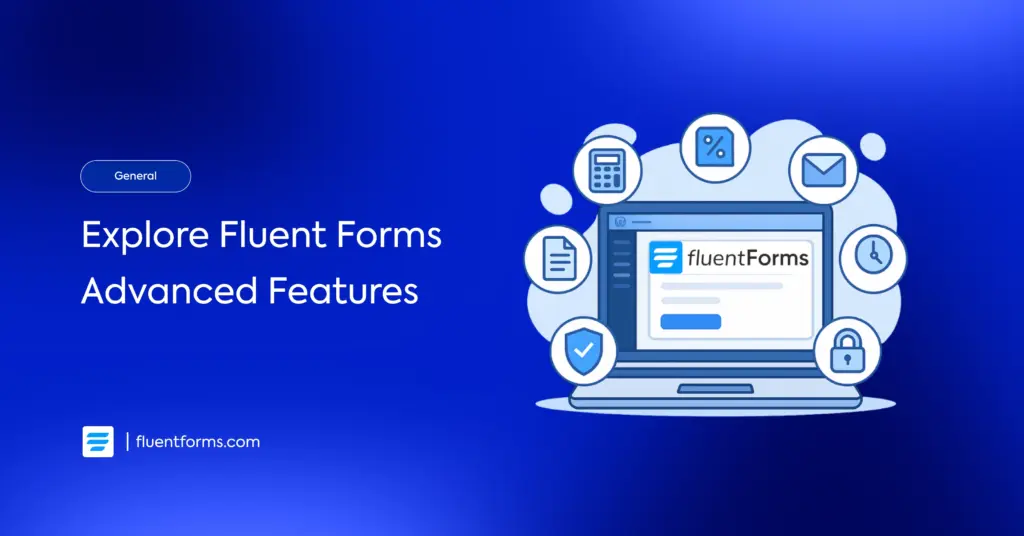
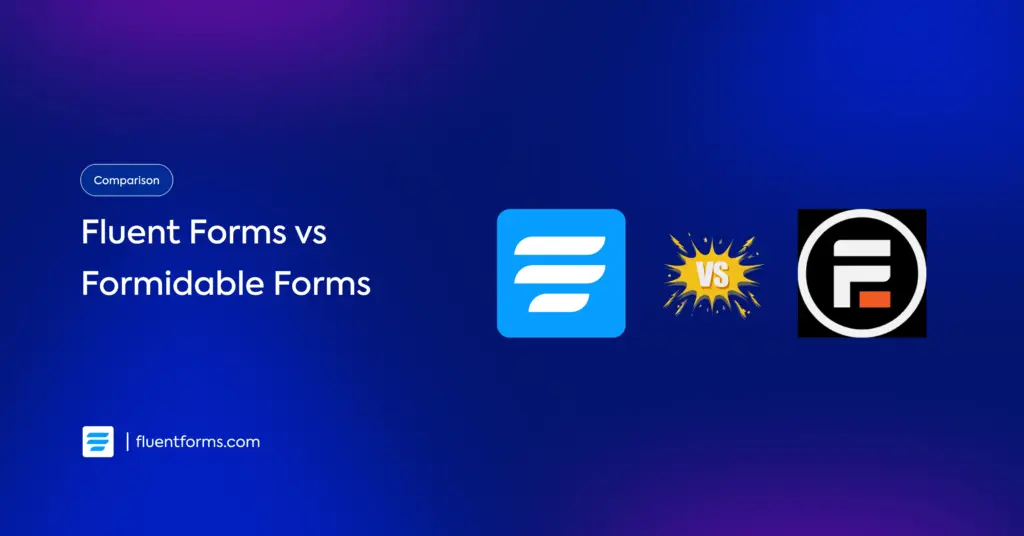




Leave a Reply